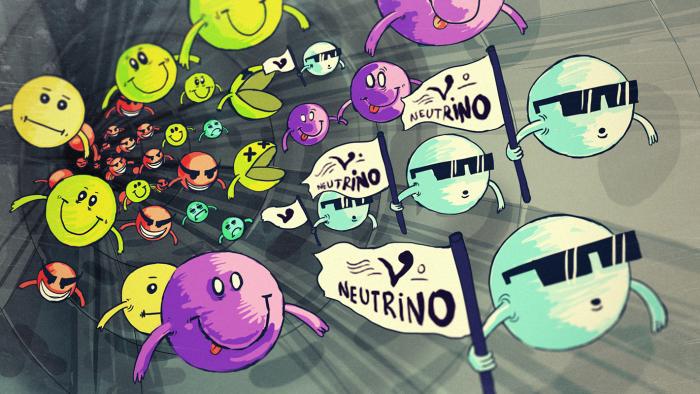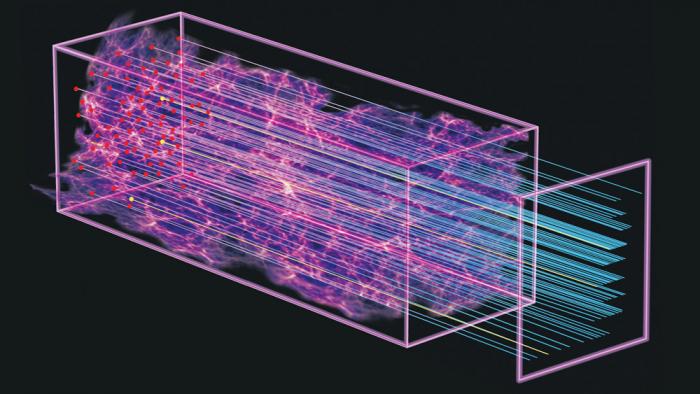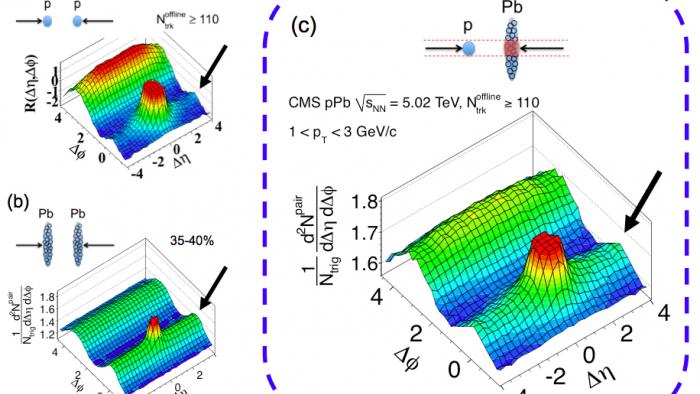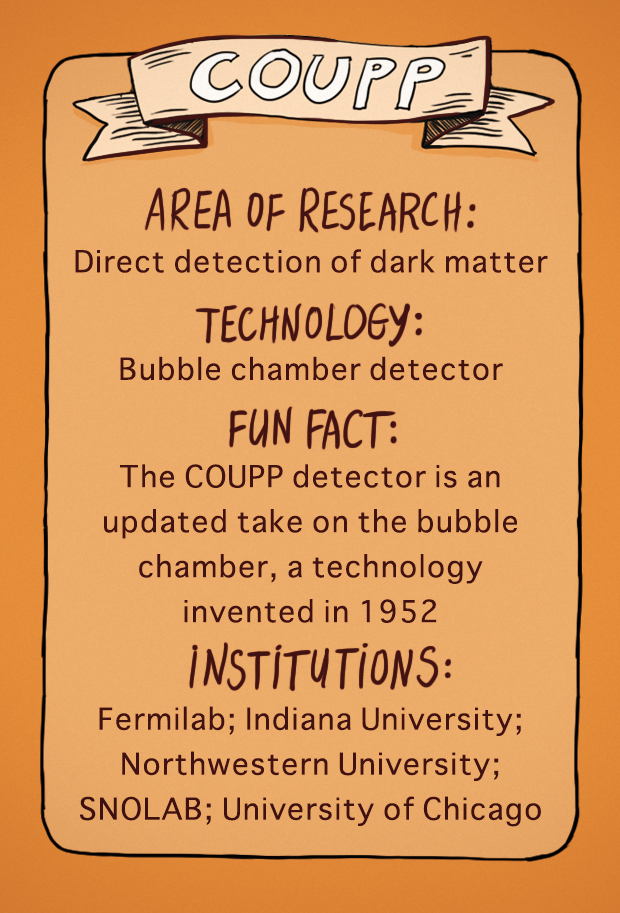Wired Science Space Photo of the Day: Heights on the Moon
Updated: 2012-11-30 18:45:30
 WIRED Gear Gadget Lab Don’t Blame Us for Windows 8 s Slow Sales , PC Makers Say HTC One X+ Now With Even More Awesome At Long Last , iTunes 11 Is Available And We Dig It Autopia The Wired Cars of the 2012 L.A . Auto Show Fiat Makes an Electric 500, But It Really Doesn’t Want To Mercedes Rolls Out the Future of the SUV Reviews Bigger , But Not Better A DAC for the Discerning Audiophile A Large Screen for Small Money Science Science Read My Hips : Body Language Sometimes Louder Than Expressions Mesmerizing Visualizations Show Mass-Transit Patterns of Major Cities New Camera Snaps All-Sky Auroras in Full Color Science Blogs Carnivorous Neighbors How Sabercats and a Bear Dog Managed to Coexist Secrets of the World’s Most Remarkable Natural Materials DIY Space Capsule Geometry and How NASA
WIRED Gear Gadget Lab Don’t Blame Us for Windows 8 s Slow Sales , PC Makers Say HTC One X+ Now With Even More Awesome At Long Last , iTunes 11 Is Available And We Dig It Autopia The Wired Cars of the 2012 L.A . Auto Show Fiat Makes an Electric 500, But It Really Doesn’t Want To Mercedes Rolls Out the Future of the SUV Reviews Bigger , But Not Better A DAC for the Discerning Audiophile A Large Screen for Small Money Science Science Read My Hips : Body Language Sometimes Louder Than Expressions Mesmerizing Visualizations Show Mass-Transit Patterns of Major Cities New Camera Snaps All-Sky Auroras in Full Color Science Blogs Carnivorous Neighbors How Sabercats and a Bear Dog Managed to Coexist Secrets of the World’s Most Remarkable Natural Materials DIY Space Capsule Geometry and How NASA
 : CURRENT ISSUE THE MAGAZINE Current Issue Next Issue Back Issues Digital Editions Preview the Magazine Special Issues E-mail Newsletter About the Magazine Subscribe , Renew or Give a Gift Subscriber Benefits Trips Tours Advertise Advertiser Links Sweepstakes Press Room Contact Us COLUMNISTS Bob Berman Glenn Chaple Tony Hallas David H . Levy Erika Rix Stephen James O'Meara NEWS OBSERVING Astronomy News Liz and Bill's Cosmic Adventures Dave's Universe videos StarDome Plus Intro to the Sky Astronomy for Kids Urban Skies Astronomy Myths The Sky this Week The Sky this Month Star Atlas Ask Astro Astro Imaging Constellation Observing Glossary EQUIPMENT Products Reviews How To MULTIMEDIA Picture of the Day Reader Photo Gallery Videos Podcasts Wallpaper COMMUNITY Why Join Local Group Blog Dave's
: CURRENT ISSUE THE MAGAZINE Current Issue Next Issue Back Issues Digital Editions Preview the Magazine Special Issues E-mail Newsletter About the Magazine Subscribe , Renew or Give a Gift Subscriber Benefits Trips Tours Advertise Advertiser Links Sweepstakes Press Room Contact Us COLUMNISTS Bob Berman Glenn Chaple Tony Hallas David H . Levy Erika Rix Stephen James O'Meara NEWS OBSERVING Astronomy News Liz and Bill's Cosmic Adventures Dave's Universe videos StarDome Plus Intro to the Sky Astronomy for Kids Urban Skies Astronomy Myths The Sky this Week The Sky this Month Star Atlas Ask Astro Astro Imaging Constellation Observing Glossary EQUIPMENT Products Reviews How To MULTIMEDIA Picture of the Day Reader Photo Gallery Videos Podcasts Wallpaper COMMUNITY Why Join Local Group Blog Dave's A jet of X-rays from a supermassive black hole 12.4 billion light years from Earth has been detected by NASA's Chandra X-ray Observatory. This is the most distant X-ray jet ever observed.
A jet of X-rays from a supermassive black hole 12.4 billion light years from Earth has been detected by NASA's Chandra X-ray Observatory. This is the most distant X-ray jet ever observed. CURRENT ISSUE THE MAGAZINE Current Issue Next Issue Back Issues Digital Editions Preview the Magazine Special Issues E-mail Newsletter About the Magazine Subscribe , Renew or Give a Gift Subscriber Benefits Trips Tours Advertise Advertiser Links Sweepstakes Press Room Contact Us COLUMNISTS Bob Berman Glenn Chaple Tony Hallas David H . Levy Erika Rix Stephen James O'Meara NEWS OBSERVING Astronomy News Liz and Bill's Cosmic Adventures Dave's Universe videos StarDome Plus Intro to the Sky Astronomy for Kids Urban Skies Astronomy Myths The Sky this Week The Sky this Month Star Atlas Ask Astro Astro Imaging Constellation Observing Glossary EQUIPMENT Products Reviews How To MULTIMEDIA Picture of the Day Reader Photo Gallery Videos Podcasts Wallpaper COMMUNITY Why Join Local Group Blog Dave's
CURRENT ISSUE THE MAGAZINE Current Issue Next Issue Back Issues Digital Editions Preview the Magazine Special Issues E-mail Newsletter About the Magazine Subscribe , Renew or Give a Gift Subscriber Benefits Trips Tours Advertise Advertiser Links Sweepstakes Press Room Contact Us COLUMNISTS Bob Berman Glenn Chaple Tony Hallas David H . Levy Erika Rix Stephen James O'Meara NEWS OBSERVING Astronomy News Liz and Bill's Cosmic Adventures Dave's Universe videos StarDome Plus Intro to the Sky Astronomy for Kids Urban Skies Astronomy Myths The Sky this Week The Sky this Month Star Atlas Ask Astro Astro Imaging Constellation Observing Glossary EQUIPMENT Products Reviews How To MULTIMEDIA Picture of the Day Reader Photo Gallery Videos Podcasts Wallpaper COMMUNITY Why Join Local Group Blog Dave's On Friday night, Nov. 16, about 1000 people came out to Fermilab to see five physicists duke it out... with science.
The occasion was the laboratory's first ever physics slam. A physics slam is kind of like a poetry slam—the five contestants were given 12 minutes each to explain a complex particle physics concept to an auditorium filled with laymen. And they had to do it in the most entertaining way they could, because audience applause determined the winner.
On Friday night, Nov. 16, about 1000 people came out to Fermilab to see five physicists duke it out... with science.
The occasion was the laboratory's first ever physics slam. A physics slam is kind of like a poetry slam—the five contestants were given 12 minutes each to explain a complex particle physics concept to an auditorium filled with laymen. And they had to do it in the most entertaining way they could, because audience applause determined the winner. CURRENT ISSUE THE MAGAZINE Current Issue Next Issue Back Issues Digital Editions Preview the Magazine Special Issues E-mail Newsletter About the Magazine Subscribe , Renew or Give a Gift Subscriber Benefits Trips Tours Advertise Advertiser Links Sweepstakes Press Room Contact Us COLUMNISTS Bob Berman Glenn Chaple Tony Hallas David H . Levy Erika Rix Stephen James O'Meara NEWS OBSERVING Astronomy News Liz and Bill's Cosmic Adventures Dave's Universe videos StarDome Plus Intro to the Sky Astronomy for Kids Urban Skies Astronomy Myths The Sky this Week The Sky this Month Star Atlas Ask Astro Astro Imaging Constellation Observing Glossary EQUIPMENT Products Reviews How To MULTIMEDIA Picture of the Day Reader Photo Gallery Videos Podcasts Wallpaper COMMUNITY Why Join Local Group Blog Dave's
CURRENT ISSUE THE MAGAZINE Current Issue Next Issue Back Issues Digital Editions Preview the Magazine Special Issues E-mail Newsletter About the Magazine Subscribe , Renew or Give a Gift Subscriber Benefits Trips Tours Advertise Advertiser Links Sweepstakes Press Room Contact Us COLUMNISTS Bob Berman Glenn Chaple Tony Hallas David H . Levy Erika Rix Stephen James O'Meara NEWS OBSERVING Astronomy News Liz and Bill's Cosmic Adventures Dave's Universe videos StarDome Plus Intro to the Sky Astronomy for Kids Urban Skies Astronomy Myths The Sky this Week The Sky this Month Star Atlas Ask Astro Astro Imaging Constellation Observing Glossary EQUIPMENT Products Reviews How To MULTIMEDIA Picture of the Day Reader Photo Gallery Videos Podcasts Wallpaper COMMUNITY Why Join Local Group Blog Dave's Looks like the good folks at the BaBar experiment at SLAC, feeling that my attention has been distracted by the Higgs boson, decided that they might be able to slip a pet peeve of mine past an unsuspecting public without drawing my ire. Not so fast, good folks at BaBar! They are good folks, actually, [...]
Looks like the good folks at the BaBar experiment at SLAC, feeling that my attention has been distracted by the Higgs boson, decided that they might be able to slip a pet peeve of mine past an unsuspecting public without drawing my ire. Not so fast, good folks at BaBar! They are good folks, actually, [...] Launch tour »
Launch tour » Time ceaselessly speeds onward in our everyday experience, never taking so much as half a step backward. Now, thanks to experimental results from the BaBar collaboration, researchers can be sure that the same is also true for single, isolated particles. Time is indeed asymmetric, even on exceedingly small scales.
Time ceaselessly speeds onward in our everyday experience, never taking so much as half a step backward. Now, thanks to experimental results from the BaBar collaboration, researchers can be sure that the same is also true for single, isolated particles. Time is indeed asymmetric, even on exceedingly small scales. Scientists on an experiment at the Large Hadron Collider confirmed this week the existence of a particle-like structure first observed at the LHC’s predecessor, the Tevatron.
Members of the CMS collaboration announced on Nov. 14 that they had spotted a curious object, dubbed Y(4140), that the CDF experiment had detected in March 2009.
“We don’t know what it is,” says Vincenzo Chiochia, co-convener of the B physics group for CMS. “We observe a structure consistent with previous observations from the Tevatron.”
Scientists on an experiment at the Large Hadron Collider confirmed this week the existence of a particle-like structure first observed at the LHC’s predecessor, the Tevatron.
Members of the CMS collaboration announced on Nov. 14 that they had spotted a curious object, dubbed Y(4140), that the CDF experiment had detected in March 2009.
“We don’t know what it is,” says Vincenzo Chiochia, co-convener of the B physics group for CMS. “We observe a structure consistent with previous observations from the Tevatron.” <div class="field-item even"Neutrinos are among the most abundant particles in the universe, but they rarely interact with matter. Some of today’s outstanding scientific mysteries, such as why there is more matter than antimatter in the universe, could be solved by studying neutrinos and detecting their interactions with matter.
Billions of neutrinos from natural sources, including the Sun, zip through every square centimeter of the Earth each second. Yet scientists cannot easily determine their initial type or exactly how far they traveled before reaching a detector.
<div class="field-item even"Neutrinos are among the most abundant particles in the universe, but they rarely interact with matter. Some of today’s outstanding scientific mysteries, such as why there is more matter than antimatter in the universe, could be solved by studying neutrinos and detecting their interactions with matter.
Billions of neutrinos from natural sources, including the Sun, zip through every square centimeter of the Earth each second. Yet scientists cannot easily determine their initial type or exactly how far they traveled before reaching a detector. The universe is expanding, with every galaxy speeding away from all others at an ever-increasing rate. But it hasn’t always been that way. Eleven billion years ago, the speed of that expansion was beginning to slow as gravity pulled galaxies in toward one another. That was before dark energy came into play.
The universe is expanding, with every galaxy speeding away from all others at an ever-increasing rate. But it hasn’t always been that way. Eleven billion years ago, the speed of that expansion was beginning to slow as gravity pulled galaxies in toward one another. That was before dark energy came into play. The Large Hadron Collider is the product of generations of work. As time presses on, many LHC collaborators involved from the beginning have moved on to other projects, and memories of the decade of construction that produced the largest collider yet, along with its associated detectors, have begun to dim.
This has implications for the LHC experiments, which are meant to run for years to come.
The importance of passing along knowledge to newer collaboration members is already apparent with a major work period planned to take place during the long shutdown next year.
The Large Hadron Collider is the product of generations of work. As time presses on, many LHC collaborators involved from the beginning have moved on to other projects, and memories of the decade of construction that produced the largest collider yet, along with its associated detectors, have begun to dim.
This has implications for the LHC experiments, which are meant to run for years to come.
The importance of passing along knowledge to newer collaboration members is already apparent with a major work period planned to take place during the long shutdown next year. I love it when kids get excited enough about science to go out and do something about it. That’s why I’m digging Jeffrey Tang – who’s 10 – because he created the Astronomy For Kids podcast, where he talks about different astronomical things. The first podcast went up in February 2012 ("The Solar System") and [...]
I love it when kids get excited enough about science to go out and do something about it. That’s why I’m digging Jeffrey Tang – who’s 10 – because he created the Astronomy For Kids podcast, where he talks about different astronomical things. The first podcast went up in February 2012 ("The Solar System") and [...] CURRENT ISSUE THE MAGAZINE Current Issue Next Issue Back Issues Digital Editions Preview the Magazine Special Issues E-mail Newsletter About the Magazine Subscribe , Renew or Give a Gift Subscriber Benefits Trips Tours Advertise Advertiser Links Sweepstakes Press Room Contact Us COLUMNISTS Bob Berman Glenn Chaple Tony Hallas David H . Levy Stephen James O'Meara NEWS OBSERVING Astronomy News Liz and Bill's Cosmic Adventures Dave's Universe videos StarDome Plus Intro to the Sky Astronomy for Kids Urban Skies Astronomy Myths The Sky this Week The Sky this Month Star Atlas Ask Astro Astro Imaging Constellation Observing Glossary EQUIPMENT Products Reviews How To MULTIMEDIA Picture of the Day Reader Photo Gallery Videos Podcasts Wallpaper COMMUNITY Why Join Local Group Blog Dave's Universe
CURRENT ISSUE THE MAGAZINE Current Issue Next Issue Back Issues Digital Editions Preview the Magazine Special Issues E-mail Newsletter About the Magazine Subscribe , Renew or Give a Gift Subscriber Benefits Trips Tours Advertise Advertiser Links Sweepstakes Press Room Contact Us COLUMNISTS Bob Berman Glenn Chaple Tony Hallas David H . Levy Stephen James O'Meara NEWS OBSERVING Astronomy News Liz and Bill's Cosmic Adventures Dave's Universe videos StarDome Plus Intro to the Sky Astronomy for Kids Urban Skies Astronomy Myths The Sky this Week The Sky this Month Star Atlas Ask Astro Astro Imaging Constellation Observing Glossary EQUIPMENT Products Reviews How To MULTIMEDIA Picture of the Day Reader Photo Gallery Videos Podcasts Wallpaper COMMUNITY Why Join Local Group Blog Dave's Universe CURRENT ISSUE THE MAGAZINE Current Issue Next Issue Back Issues Digital Editions Preview the Magazine Special Issues E-mail Newsletter About the Magazine Subscribe , Renew or Give a Gift Subscriber Benefits Trips Tours Advertise Advertiser Links Sweepstakes Press Room Contact Us COLUMNISTS Bob Berman Glenn Chaple Tony Hallas David H . Levy Stephen James O'Meara NEWS OBSERVING Astronomy News Liz and Bill's Cosmic Adventures Dave's Universe videos StarDome Plus Intro to the Sky Astronomy for Kids Urban Skies Astronomy Myths The Sky this Week The Sky this Month Star Atlas Ask Astro Astro Imaging Constellation Observing Glossary EQUIPMENT Products Reviews How To MULTIMEDIA Picture of the Day Reader Photo Gallery Videos Podcasts Wallpaper COMMUNITY Why Join Local Group Blog Dave's Universe
CURRENT ISSUE THE MAGAZINE Current Issue Next Issue Back Issues Digital Editions Preview the Magazine Special Issues E-mail Newsletter About the Magazine Subscribe , Renew or Give a Gift Subscriber Benefits Trips Tours Advertise Advertiser Links Sweepstakes Press Room Contact Us COLUMNISTS Bob Berman Glenn Chaple Tony Hallas David H . Levy Stephen James O'Meara NEWS OBSERVING Astronomy News Liz and Bill's Cosmic Adventures Dave's Universe videos StarDome Plus Intro to the Sky Astronomy for Kids Urban Skies Astronomy Myths The Sky this Week The Sky this Month Star Atlas Ask Astro Astro Imaging Constellation Observing Glossary EQUIPMENT Products Reviews How To MULTIMEDIA Picture of the Day Reader Photo Gallery Videos Podcasts Wallpaper COMMUNITY Why Join Local Group Blog Dave's Universe <div class="field-item even"CMS physicists observed an unusual trend in the data they collected in September when they collided protons with lead ions instead of other protons.
Particles produced in collisions tend to travel in opposite directions, but in one in roughly every 2 million collisions, the physicists saw particles travel in a common direction. Seemingly unrelated particles located apart from one another in the detector also had a tendency to travel in a common direction.
<div class="field-item even"CMS physicists observed an unusual trend in the data they collected in September when they collided protons with lead ions instead of other protons.
Particles produced in collisions tend to travel in opposite directions, but in one in roughly every 2 million collisions, the physicists saw particles travel in a common direction. Seemingly unrelated particles located apart from one another in the detector also had a tendency to travel in a common direction. More than 300 scientists who study the sky in the high-powered light of gamma rays came together last week for five days of presentations, meetings and the chance to compare notes at the Fourth International Fermi Symposium. Acronyms flew thick and fast: SNR (supernova remnant), TGF (terrestrial gamma-ray flashes) and AGN (active galactic nucleus) were only a few of the TLAs (three-letter acronyms) to be heard.
More than 300 scientists who study the sky in the high-powered light of gamma rays came together last week for five days of presentations, meetings and the chance to compare notes at the Fourth International Fermi Symposium. Acronyms flew thick and fast: SNR (supernova remnant), TGF (terrestrial gamma-ray flashes) and AGN (active galactic nucleus) were only a few of the TLAs (three-letter acronyms) to be heard. In September, postdoc Hugh Lippincott prepared for a roadtrip that would take him and physicist Erik Ramberg northeast from their starting point near Chicago through Michigan and across the Canadian border. He stocked a cargo van they rented for the occasion with granola bars, apples and an iPod heavy on Pearl Jam. But this was no joyride. This was a practice run.
In September, postdoc Hugh Lippincott prepared for a roadtrip that would take him and physicist Erik Ramberg northeast from their starting point near Chicago through Michigan and across the Canadian border. He stocked a cargo van they rented for the occasion with granola bars, apples and an iPod heavy on Pearl Jam. But this was no joyride. This was a practice run.